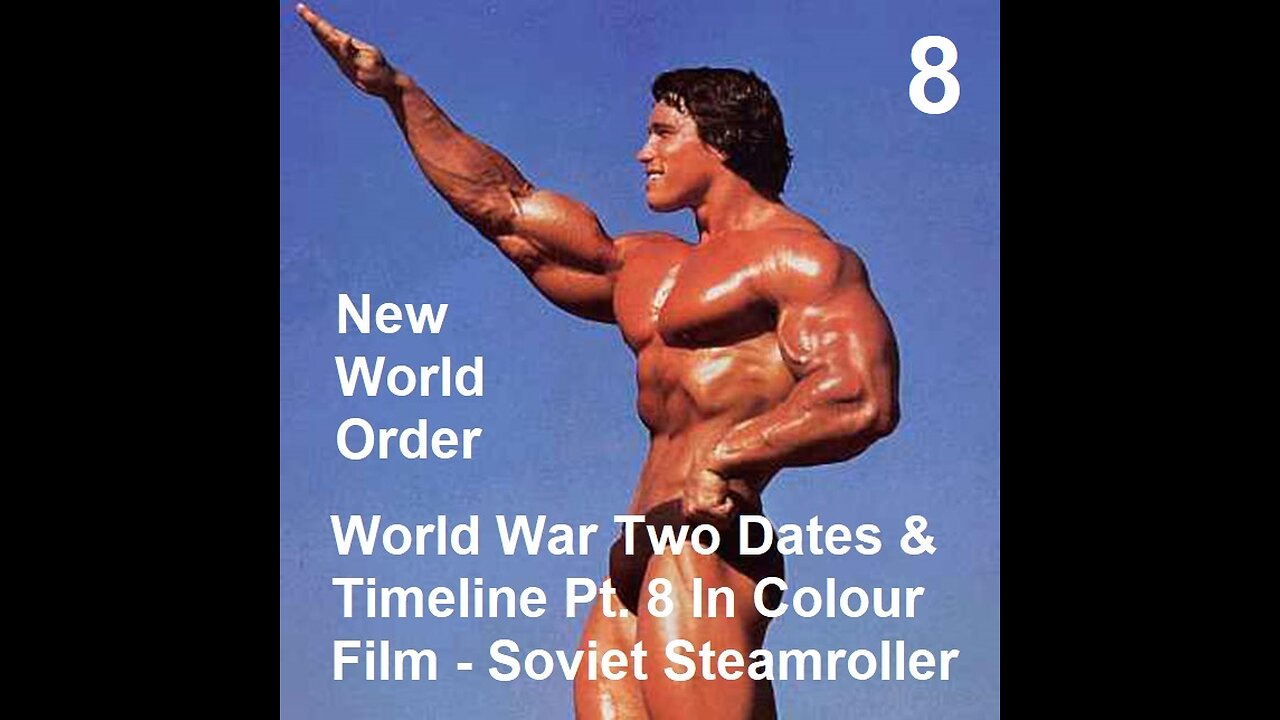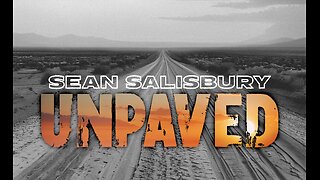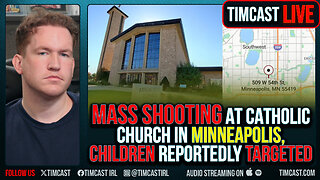Premium Only Content

World War Two - Dates & Timeline Pt. 8 In Colour Film - The Soviet Steamroller
True History World War Two was a global war that lasted from Sept. 18-1931 to Aug. 14-1945 Explore the true timeline of key events before and during World War 2. The mass murder of Europe’s Jews took place in the context of World War Two. As German troops invaded and occupied more and more territory in Europe, the Soviet Union, and North Africa, the regime’s racial and anti-Semitic policies became more radical, moving from persecution to genocide. America's isolation from war ended on December 7, 1941, when Japan staged a surprise attack on American military installations in the Pacific.
The Second Sino-Japanese War was a full-scale war between China and the Empire of Japan that lasted from 1931 to 1945. China was aided by the Soviet Union, the United Kingdom, the United States, and Nazi Germany before its alliance with Japan. The war is often regarded as the beginning of World War II in Asia, although some scholars consider the European War and the Pacific War to be entirely separate, albeit concurrent. Around 20 million people, mostly civilians, were killed in the war. The United States advised and supported China's ground war, while basing only a few of its own units in China for operations against Japanese forces in the region and Japan itself. The war's end brought a devastating blow to American diplomacy as China ultimately fell to communism, forever changing the global balance of power in the emerging Cold War.
In the 1930s, the Great Depression and the memory of tragic losses in World War I contributed to pushing American public opinion and policy towards isolationism. Isolationists advocated non-involvement in European and Asian conflicts and non-entanglement in international politics. Although the United States took measures to avoid political and military conflicts across the oceans, it continued to expand economically and protect its interests in Latin America. Isolationists believed that World War II was ultimately a dispute between foreign nations and that the United States had no good reason to get involved. The best policy, they claimed, was for the United States to build up its own defenses and avoid antagonizing either side. After the attack on Pearl Harbor, isolationists such as Charles Lindbergh's America First Committee and Herbert Hoover announced their support of the war effort.
World War II was a global conflict that lasted from 1939 to 1945. The main combatants were the Axis powers (Germany, Italy, and Japan) and the Allies (France, Great Britain, the United States, the Soviet Union, and China). The European theater of World War II saw heavy fighting across Europe for almost six years, starting with Germany's invasion of Poland on 1 September 1939 and ending with the Western Allies conquering most of Western Europe, the Soviet Union conquering most of Eastern Europe including the German capital Berlin and Germany's unconditional surrender on 8 May 1945. The war continued primarily between the European Axis powers and the British Empire, with war in the Balkans, the aerial Battle of Britain, the Blitz of the United Kingdom, and the Battle of the Atlantic. The SOE operated in every nation in Europe and southeast Asia that was under the rule of an Axis power. Adolf Hitler and his National Socialist (Nazi Party) rearmed the nation and signed treaties with Italy and Japan to further his ambitions of world domination.
The League of Nations was established in 1919 by the victorious Allied powers after World War I. The League began organizational work in the fall of 1919, spending its first 10 months with a headquarters in London before moving to Geneva. The Covenant of the League of Nations went into effect on January 10, 1920, formally instituting the League of Nations. The League was seen as the epitome of a new world order based on mutual cooperation and the peaceful resolution of international conflicts. The Covenant bound its Member States to try to settle their disputes peacefully. By joining the League, Member States also renounced secret diplomacy, committed to reduce their armaments, and agreed to comply with international law. Although the League was unable to fulfill the hopes of its founders, its creation was an event of decisive importance in the history of international relations.
"World War II in Colour" is a 13-episode British television docuseries that recounts the major events of World War II, covering the Western Front, Eastern Front, North African Campaign, and the Pacific War. The show is in full color, combining both original and colorized footage. It was first broadcast in 2008-2009 and was on syndication in the United States on the Military Channel. In 2021, Channel 5 broadcast a sister series called "Thirties in Colour: Countdown to War" on their 5Select channel, which would be replaced in the schedules by the 2009 series in September 2021, once the new programme had got to the point of war in its timeline. "Greatest Events of WWII in Colour" is a docuseries that documents some of the events of World War II while showing colorized archive footage of such events. It was released on Netflix as an original series on November 8, 2019, and uses highly advanced colorization techniques to show critical moments from World War II, from Stalingrad to The Battle of Britain, in a whole new light.
World War II may have started more than 75 years ago, but people still think about it a lot. You cannot go online without seeing someone be compared to Hitler or the Nazis. Hollywood cannot churn out movies about it fast enough, and there are thousands of books to read on the subject. Even people who don't normally consider themselves history experts are pretty sure they know the basics when it comes to World War II.
Except so much of what we think we know is wrong. Propaganda was flying around from all sides during the war, and even after all these years we still believe some of it. Hindsight has made some countries into cowards and some into heroes, while leaders from the time are either completely evil or pure perfection. Obviously, anything as messy as war is a lot more complicated than that. Here are some of the biggest myths you probably believe about World War Two.
September 18, 1931 Japan invades Manchuria.
October 2, 1935–May 1936 Fascist Italy invades, conquers, and annexes Ethiopia.
October 25–November 1, 1936 Nazi Germany and Fascist Italy sign a treaty of cooperation on October 25. On November 1, the Rome-Berlin Axis is announced.
November 25, 1936 Nazi Germany and Imperial Japan sign the Anti-Comintern Pact. The pact is directed against the Soviet Union and the international Communist movement.
July 7, 1937 Japan invades China.
November 26, 1937 Italy joins Germany and Japan in the Anti-Comintern Pact.
March 11–13, 1938 Germany incorporates Austria in the Anschluss.
September 29, 1938 Germany, Italy, Great Britain, and France sign the Munich agreement which forces the Czechoslovak Republic to cede the Sudetenland, including key Czechoslovak military defense positions, to Nazi Germany.
March 14–15, 1939 Under German pressure, the Slovaks declare their independence and form a Slovak Republic. The Germans occupy the dismantled Czech lands in violation of the Munich agreement and form the Protectorate of Bohemia and Moravia.
March 31, 1939 France and Great Britain guarantee the integrity of the borders of the Polish state.
April 7–15, 1939 Fascist Italy invades and annexes Albania.
August 23, 1939 Nazi Germany and the Soviet Union sign a non-aggression agreement and a secret protocol dividing eastern Europe into spheres of influence.
September 1, 1939 Germany invades Poland, initiating World War II in Europe.
September 3, 1939 Honoring their guarantee of Poland’s borders, Great Britain and France declare war on Germany.
September 17, 1939 The Soviet Union invades Poland from the east. The Polish government flees into exile via Romania, first to France and then later to Great Britain.
September 27–29, 1939 Warsaw surrenders on September 27. Germany and the Soviet Union divide Poland between them.
November 30, 1939–March 12, 1940 The Soviet Union invades Finland, initiating the so-called Winter War. The Finns sue for an armistice and cede the northern shores of Lake Ladoga to the Soviet Union. They also cede the small Finnish coastline on the Arctic Sea.
April 9, 1940–June 9, 1940 Germany invades Denmark and Norway. Denmark surrenders on the day of the attack. Norway holds out until June 9.
May 10, 1940–June 22, 1940 Germany attacks western Europe, specifically France and the neutral Low Countries (Belgium, the Netherlands, and Luxembourg). Luxembourg is occupied on May 10; the Netherlands surrenders on May 14; and Belgium surrenders on May 28. On June 22, France signs an armistice agreement by which the Germans occupy the northern half of the country and the entire Atlantic coastline. In southern France, a collaborationist regime with its capital in Vichy is established.
June 10, 1940 Italy enters the war. Italy invades southern France on June 21.
June 28, 1940 The Soviet Union forces Romania to cede the eastern province of Bessarabia and the northern half of Bukovina to Soviet Ukraine.
June 14, 1940–August 6, 1940 The Soviet Union occupies the Baltic states (Estonia, Latvia, and Lithuania) on June 14–18. On July 14–15, it engineers Communist coup d’états in each of these countries and then annexes them as Soviet Republics on August 3–6.
July 10, 1940–October 31, 1940 The air war known as the Battle of Britain ends in defeat for Nazi Germany.
August 30, 1940 Second Vienna Award: Germany and Italy arbitrate a decision on the division of the disputed province of Transylvania between Romania and Hungary. The loss of northern Transylvania forces Romanian King Carol to abdicate in favor of his son, Michael, and brings to power a dictatorship under General Ion Antonescu.
September 13, 1940 The Italians invade British-controlled Egypt from Italian-controlled Libya.
September 27, 1940 Germany, Italy, and Japan sign the Tripartite Pact.
October 1940 Italy invades Greece from Albania on October 28.
November 1940 Hungary (November 20), Romania (November 23), and Slovakia (November 24) join the Axis.
February 1941 The Germans send the Afrika Korps to North Africa to reinforce the faltering Italians.
March 1, 1941 Bulgaria joins the Axis.
April 6, 1941–June 1941 Germany, Italy, and Hungary invade Yugoslavia and, together with Bulgaria, dismember it. Yugoslavia surrenders on April 17. Germany and Bulgaria invade Greece in support of the Italians. Resistance in Greece ceases in early June 1941.
April 10, 1941 The leaders of the terrorist Ustaša movement proclaim the so-called Independent State of Croatia. Recognized immediately by Germany and Italy, the new state includes the province of Bosnia-Herzegovina. Croatia joins the Axis powers formally on June 15, 1941.
June 22, 1941–November 1941 Nazi Germany and its Axis partners (except Bulgaria) invade the Soviet Union. Finland, seeking redress for the territorial losses in the armistice concluding the so-called Winter War, agrees to participate in the invasion. The Germans quickly overrun the Baltic states and, joined by the Finns, lay siege to Leningrad (St. Petersburg) by September. In the center, the Germans capture Smolensk in early August and drive on Moscow by October. In the south, German and Romanian troops capture Kiev (Kyiv) in September and capture Rostov on the Don River in November.
December 6, 1941 A Soviet counteroffensive drives the Germans from the Moscow suburbs in chaotic retreat.
December 7, 1941 Japan bombs Pearl Harbor.
December 8, 1941 The United States declares war on Japan, entering World War II. Japanese troops land in the Philippines, French Indochina (Vietnam, Laos, Cambodia), and British Singapore. The Japanese occupy the Philippines, Indochina, and Singapore by April 1942 and take control of Burma in May.
December 11–13, 1941 Nazi Germany and its Axis partners declare war on the United States.
May 30, 1942–May 1945 The British bomb Köln (Cologne), in the start of a bombing campaign that brings the war home to Germany. Over the next three years Anglo-American bombing reduces urban Germany to rubble.
June 1942 The US Navy halts the Japanese naval advance in the central Pacific at Midway.
June 28, 1942–September 1942 Germany and its Axis partners launch a new offensive in the Soviet Union. German troops fight their way into Stalingrad (Volgograd) on the Volga River by mid-September and penetrate deep into the Caucasus after securing the Crimean Peninsula. With German forces in North Africa having penetrated Egypt, Germany was at the height of its military success in World War II.
August 7, 1942–February 9, 1943 For the first time, Allied forces go on the offensive against Japanese forces by landing on and taking Tulagi, Florida, and Guadalcanal in the Solomon Islands.
October 23–24, 1942 British troops defeat the Germans and Italians at El Alamein in Egypt, sending the Axis forces in chaotic retreat across Libya to the eastern border of Tunisia.
November 8, 1942 US and British troops land at several points on the beaches of Algeria and Morocco in French North Africa. The failure of the Vichy French troops to defend against the invasion enables the Allies to move swiftly to the western border of Tunisia and triggers the German occupation of southern France on November 11.
November 23, 1942–February 2, 1943 Soviet troops counterattack, breaking through the Hungarian and Romanian lines northwest and southwest of Stalingrad and trapping the German Sixth Army in the city. Forbidden by Hitler to retreat or try to break out of the Soviet ring, the survivors of the Sixth Army surrender on January 30 and February 2, 1943.
May 13, 1943 Axis forces in Tunisia surrender to the Allies, ending the North African campaign.
July 5, 1943 The Germans launch a massive tank offensive near Kursk in the Soviet Union. The Soviets blunt the attack within a week and begin an offensive initiative of their own.
July 10, 1943 US and British troops land on Sicily. By mid-August, the Allies control Sicily.
July 25, 1943 The Fascist Grand Council deposes Benito Mussolini, enabling Italian Marshall Pietro Badoglio to form a new government.
September 8, 1943 The Badoglio government surrenders unconditionally to the Allies. The Germans immediately seize control of Rome and northern Italy, establishing a puppet Fascist regime under Mussolini, who is freed from imprisonment by German commandos on September 12.
September 9, 1943 Allied troops land on the beaches of Salerno near Naples.
November 6, 1943 Soviet troops liberate Kiev.
January 22, 1944 Allied troops land successfully near Anzio, just south of Rome.
March 19, 1944 Fearing Hungary’s intention to desert the Axis partnership, the Germans occupy Hungary and compel the regent, Admiral Miklos Horthy, to appoint a pro-German minister president.
June 4, 1944 Allied troops liberate Rome. Within six weeks, Anglo-American bombers could hit targets in eastern Germany for the first time.
June 6, 1944 British, US, and Canadian troops successfully land on the Normandy beaches of France, opening a “Second Front” against the Germans.
June 22, 1944 The Soviets launch a massive offensive in eastern Belorussia (Belarus), destroying the German Army Group Center and driving westward to the Vistula River toward Warsaw in central Poland by August 1.
July 25, 1944 Allied forces break out of the Normandy beachhead and race eastward towards Paris.
August 1, 1944–October 5, 1944 The Home Army (the non-communist Polish resistance) rises up against the Germans in an effort to liberate Warsaw before the arrival of Soviet troops. The Soviet advance halts on the east bank of the Vistula. On October 5, the Germans accept the surrender of the remnants of the Home Army forces fighting in Warsaw.
August 15, 1944 Allied forces land in southern France near Nice and advance rapidly towards the Rhine River to the northeast.
August 20–25, 1944 Allied troops reach Paris. On August 25, Free French forces, supported by Allied troops, enter the French capital. By September, the Allies reach the German border. By December, virtually all of France, most of Belgium, and part of the southern Netherlands are liberated.
August 23, 1944 The appearance of Soviet troops on the Prut River induces the Romanian opposition to overthrow the Antonescu regime. The new government concludes an armistice and immediately switches sides in the war. The Romanian turnaround compels Bulgaria to surrender on September 8, and the Germans to evacuate Greece, Albania, and southern Yugoslavia in October.
August 29, 1944–October 28, 1944 Under the leadership of the Slovak National Council, consisting of both Communists and non-Communists, underground Slovak resistance units rise against the Germans and the indigenous fascist Slovak regime. In late October, the Germans capture Banská Bystrica, the headquarters of the uprising, and put an end to organized resistance.
September 4, 1944 Finland agrees to sign an armistice with the Soviet Union and to expel German forces.
October 15, 1944 The Hungarian fascist Arrow Cross movement carries out a coup d’état with German support to prevent the Hungarian government from pursuing negotiations for surrender to the Soviets.
October 20, 1944 US troops land in the Philippines.
December 16, 1944 The Germans launch a final offensive in the west, known as the Battle of the Bulge, in an attempt to re-conquer Belgium and split the Allied forces along the German border. By January 1, 1945, the Germans are in retreat.
January 12, 1945 The Soviets launch a new offensive, liberating Warsaw and Krakow in January. They capture Budapest after a two-month siege on February 13, driving the Germans and their Hungarian collaborators out of Hungary in early April.
March 7, 1945 US troops cross the Rhine River at Remagen.
April 4, 1945 The capture of Bratislava forces Slovakia to surrender.
April 13, 1945 Soviet forces capture Vienna.
April 16, 1945 The Soviets launch their final offensive, encircling Berlin.
April 1945 Partisan units, led by Yugoslav Communist leader Josip Tito, capture Zagreb and topple the Ustaša regime. The top Ustaša leaders flee to Italy and Austria.
April 30, 1945 Hitler commits suicide.
May 7–8, 1945 Germany signs an unconditional surrender at the headquarters of US General Dwight D. Eisenhower, Commander of Allied forces in northwest Europe, at Reims on May 7. The surrender takes effect on May 8 at 11:01 PM Central European time (CET).
May 8, 1945 Germany signs a second, very similar, document of surrender in Berlin. It also comes into effect on May 8 at 11:01 PM CET. In Moscow, this was already after midnight on May 9.
May 1945 Allied troops conquer Okinawa, the last island stop before the main Japanese islands.
August 6, 1945 The United States drops an atomic bomb on Hiroshima.
August 8, 1945 The Soviet Union declares war on Japan and invades Manchuria.
August 9, 1945 The United States drops an atomic bomb on Nagasaki.
September 2, 1945 Having agreed in principle to unconditional surrender on August 14, 1945, Japan formally surrenders, ending World War 2.
1. "The Gathering Storm" - https://rumble.com/v34gknj-world-war-two-dates-and-timeline-pt.-1-in-colour-film-the-gathering-storm.html
Just years after World War I, Germany and other nations are in an economic depression. Leader approval ratings of Germany, Italy, Japan and Spain are shallow, giving the rise to military dictators along with their parties. Years after Adolf Hitler becomes Chancellor of Germany, he and his generals plot the invasion of Poland.
2. "Lightning War" - https://rumble.com/v34i301-world-war-two-dates-and-timeline-pt.-2-in-colour-film-the-lightning-war.html
The Germans develop a new military tactic known as Blitzkrieg. The Nazis use Blitzkrieg, dominating land and air warfare, allowing them to take Poland and conquer France in matters of weeks. Britain and Canada, as well as other Commonwealth countries, declare war on Germany.
3. "Britain at Bay" - https://rumble.com/v34jxp4-world-war-two-dates-and-timeline-pt.-3-in-colour-film-britain-at-bay.html
July 1940, Britain is standing on its last legs while being pummeled by Germany. Though Hitler has better soldiers and a more powerful air force, critical errors of the Luftwaffe allow Britain to regain strength and start pushing back.
4. "Hitler Strikes East" - https://rumble.com/v34lpsx-world-war-two-dates-and-timeline-pt.-4-in-colour-film-hitler-strikes-east.html
After the unsuccessful attempt to defeat the British, Hitler focuses his attention on the Soviet Union. This proves to be quite a military gamble.
5. "Red Sun Rampant" - https://rumble.com/v34qnxk-world-war-two-dates-and-timeline-pt.-5-in-colour-film-red-sun-rampant.html
On 7 December 1941, the Japanese bomb the U.S. Fleet in Pearl Harbor. The United States officially enters World War II starting with the Pacific Front.
6. "The Mediterranean and North Africa" - https://rumble.com/v34sbv4-world-war-two-dates-and-timeline-pt.-6-in-colour-film-mediterranean-and-nor.html
After success in North Africa and Greece, Allies push Benito Mussolini's forces all the way back to Italy. Italy is then knocked out of the war, Mussolini is deposed, and the Allies start to put real pressure on Nazi Germany.
7. "Turning the Tide" - https://rumble.com/v34u5o6-world-war-two-dates-and-timeline-pt.-7-in-colour-film-turning-the-tide.html
The Allies and the Axis are searching for a final blow to each other to end the war. While the Allies try out strategic fire bombing, Hitler tries cutting off American supply lines with submarines. Right now this is a stalemate.
8. "The Soviet Steamroller" - https://rumble.com/v34wd06-world-war-two-dates-and-timeline-pt.-8-in-colour-film-the-soviet-steamrolle.html
After Hitler's gamble in the East fails, failing to defeat Stalingrad and Moscow, the Soviet Union, with its vast resources and armies, starts to slowly push back and grow. Hitler is now on the defence on ⅔ of his fronts.
9. "Overlord" - https://rumble.com/v34ymj6-world-war-two-dates-and-timeline-pt.-9-in-colour-film-overlord-d-day-.html
After careful planning and tremendous secrecy but more importantly the lack of Hitler's attention, the Allies successfully breach mainland Western Europe through the Normandy landings. After thousands of lives are lost to the operation, the Allies are able to start the liberation of Western Europe.
10. "Closing the Ring" - https://rumble.com/v350hxe-world-war-two-dates-and-timeline-pt.-10-in-colour-film-closing-the-ring.html
The Allies are now on the offensive on all three fronts. As their forces push through Europe soldiers start uncovering Hitler's death camps. This was the Allies' first concrete knowledge of the Holocaust.
11. "The Island War" - https://rumble.com/v352ipq-world-war-two-dates-and-timeline-pt.-11-in-colour-film-the-island-war.html
An aggressive war is being waged against the Japanese. The United States is now starting to use a new tactic of island-hopping, resulting in the slow crumbling of the Japanese air force and navy.
12. "Victory in Europe" - https://rumble.com/v353y2w-world-war-two-dates-and-timeline-pt.-12-in-colour-film-victory-in-europe.html
From three sides, the British, Canadians, Americans, and Soviets are starting to shred through what is left of the Third Reich. As the Nazi forces see their final days, Hitler commits suicide, and the Allies begin dividing up Europe.
13. "Victory in the Pacific" - https://rumble.com/v356qha-world-war-two-dates-and-timeline-pt.-13-in-colour-film-victory-in-the-pacif.html
The Americans wipe out Japan's air force through a strategy of island-hopping. As the Americans face the decision of what to do with mainland Japan, President Truman calls to bomb Hiroshima and Nagasaki with nuclear weapons. Japan had no choice but to surrender, and the Cold War begins.
1933
January 30, 1933 - Adolf Hitler is appointed Chancellor of Germany a nation with a Jewish population of 566,000.
February 22, 1933 - 40,000 SA and SS men are sworn in as auxiliary police.
February 27, 1933 - Nazis burn Reichstag building to create crisis atmosphere.
February 28, 1933 - Emergency powers granted to Hitler as a result of the Reichstag fire.
March 22, 1933 - Nazis open Dachau concentration camp near Munich, to be followed by Buchenwald near Weimar in central Germany, Sachsenhausen near Berlin in northern Germany, and Ravensbrück for women.
March 24, 1933 - German Parliament passes Enabling Act giving Hitler dictatorial powers.
April 1, 1933 - Nazis stage boycott of Jewish shops and businesses.
April 11, 1933 - Nazis issue a Decree defining a non-Aryan as "anyone descended from non-Aryan, especially Jewish, parents or grandparents. One parent or grandparent classifies the descendant as non-Aryan...especially if one parent or grandparent was of the Jewish faith."
April 26, 1933 - The Gestapo is born, created by Hermann Göring in the German state of Prussia.
May 10, 1933 - Burning of books in Berlin and throughout Germany.
July 14, 1933 - Nazi Party is declared the only legal party in Germany; Also, Nazis pass Law to strip Jewish immigrants from Poland of their German citizenship.
In July - Nazis pass law allowing for forced sterilization of those found by a Hereditary Health Court to have genetic defects.
In September - Nazis establish Reich Chamber of Culture, then exclude Jews from the Arts.
September 29, 1933 - Nazis prohibit Jews from owning land.
October 4, 1933 - Jews are prohibited from being newspaper editors.
November 24, 1933 - Nazis pass a Law against Habitual and Dangerous Criminals, which allows beggars, the homeless, alcoholics and the unemployed to be sent to concentration camps.
1934
January 24, 1934 - Jews are banned from the German Labor Front.
May 17, 1934 - Jews not allowed national health insurance.
June 30, 1934 - The Night of Long Knives occurs as Hitler, Göring and Himmler conduct a purge of the SA (storm trooper) leadership.
July 20, 1934 - The SS (Schutzstaffel) is made an independent organization from the SA.
July 22, 1934 - Jews are prohibited from getting legal qualifications.
August 2, 1934 - German President von Hindenburg dies. Hitler becomes Führer.
August 19, 1934 - Hitler receives a 90 percent 'Yes' vote from German voters approving his new powers.
1935
May 21, 1935 - Nazis ban Jews from serving in the military.
June 26, 1935 - Nazis pass law allowing forced abortions on women to prevent them from passing on hereditary diseases.
August 6, 1935 - Nazis force Jewish performers/artists to join Jewish Cultural Unions.
September 15, 1935 - Nuremberg Race Laws against Jews decreed.
1936
February 10, 1936 - The German Gestapo is placed above the law.
In March - SS Deathshead division is established to guard concentration camps.
March 7, 1936 - Nazis occupy the Rhineland.
June 17, 1936 - Heinrich Himmler is appointed chief of the German Police.
August 1, 1936 - Olympic games begin in Berlin. Hitler and top Nazis seek to gain legitimacy through favorable public opinion from foreign visitors and thus temporarily refrain from actions against Jews.
In August - Nazis set up an Office for Combating Homosexuality and Abortions (by healthy women).
1937
In January - Jews are banned from many professional occupations including teaching Germans, and from being accountants or dentists. They are also denied tax reductions and child allowances.
November 8, 1937 - 'Eternal Jew' travelling exhibition opens in Munich.
1938
March 12/13, 1938 - Nazi troops enter Austria, which has a population of 200,000 Jews, mainly living in Vienna. Hitler announces Anschluss (union) with Austria.
In March - After the Anschluss, the SS is placed in charge of Jewish affairs in Austria with Adolf Eichmann establishing an Office for Jewish Emigration in Vienna. Himmler then establishes Mauthausen concentration camp near Linz.
April 22, 1938 - Nazis prohibit Aryan 'front-ownership' of Jewish businesses.
April 26, 1938 - Nazis order Jews to register wealth and property.
June 14, 1938 - Nazis order Jewish-owned businesses to register.
In July - At Evian, France, the U.S. convenes a League of Nations conference with delegates from 32 countries to consider helping Jews fleeing Hitler, but results in inaction as no country will accept them.
July 6, 1938 - Nazis prohibited Jews from trading and providing a variety of specified commercial services.
July 23, 1938 - Nazis order Jews over age 15 to apply for identity cards from the police, to be shown on demand to any police officer.
July 25, 1938 - Jewish doctors prohibited by law from practicing medicine.
August 11, 1938 - Nazis destroy the synagogue in Nuremberg.
August 17, 1938 - Nazis require Jewish women to add Sarah and men to add Israel to their names on all legal documents including passports.
September 27, 1938 - Jews are prohibited from all legal practices.
October 5, 1938 - Law requires Jewish passports to be stamped with a large red "J."
October 15, 1938 - Nazi troops occupy the Sudetenland.
October 28, 1938 - Nazis arrest 17,000 Jews of Polish nationality living in Germany, then expel them back to Poland which refuses them entry, leaving them in 'No-Man's Land' near the Polish border for several months.
November 7, 1938 - Ernst vom Rath, third secretary in the German Embassy in Paris, is shot and mortally wounded by Herschel Grynszpan, the 17-year-old son of one of the deported Polish Jews. Rath dies on November 9, precipitating Kristallnacht.
November 9/10 - Kristallnacht - The Night of Broken Glass.
November 12, 1938 - Nazis fine Jews one billion marks for damages related to Kristallnacht.
November 15, 1938 - Jewish pupils are expelled from all non-Jewish German schools.
December 3, 1938 - Law for compulsory Aryanization of all Jewish businesses.
December 14, 1938 - Hermann Göring takes charge of resolving the "Jewish Question."
1939
January 24, 1939 - SS leader Reinhard Heydrich is ordered by Göring to speed up the emigration of Jews.
January 30, 1939 - Hitler threatens Jews during Reichstag speech.
February 21, 1939 - Nazis force Jews to hand over all gold and silver items.
March 15/16 - Nazi troops seize Czechoslovakia (Jewish pop. 350,000).
April 19, 1939 - Slovakia passes its own version of the Nuremberg Laws.
April 30, 1939 - Jews lose rights as tenants and are relocated into Jewish houses.
In May - The St. Louis, a ship crowded with 930 Jewish refugees, is turned away by Cuba, the United States and other countries and returns to Europe.
July 4, 1939 - German Jews denied the right to hold government jobs.
July 21, 1939 - Adolf Eichmann is appointed director of the Prague Office of Jewish Emigration.
September 1, 1939 - Nazis invade Poland (Jewish pop. 3.35 million, the largest in Europe). Beginning of SS activity in Poland.
See also: The History Place - World War II in Europe Timeline
September 1, 1939 - Jews in Germany are forbidden to be outdoors after 8 p.m. in winter and 9 p.m. in summer.
September 3, 1939 - Great Britain and France declare war on Germany.
September 4, 1939 - Warsaw is cut off by the German Army.
September 17, 1939 - Soviet troops invade eastern Poland.
September 21, 1939 - Heydrich issues instructions to SS Einsatzgruppen (special action squads) in Poland regarding treatment of Jews, stating they are to be gathered into ghettos near railroads for the future "final goal." He also orders a census and the establishment of Jewish administrative councils within the ghettos to implement Nazi policies and decrees.
September 23, 1939 - German Jews are forbidden to own wireless (radio) sets.
September 27, 1939 - Warsaw surrenders; Heydrich becomes leader of RSHA.
September 29, 1939 - Nazis and Soviets divide up Poland. Over two million Jews reside in Nazi controlled areas, leaving 1.3 million in the Soviet area.
In September - Quote from Nazi newspaper, Der Stürmer, published by Julius Streicher - "The Jewish people ought to be exterminated root and branch. Then the plague of pests would have disappeared in Poland at one stroke."
In October - Nazis begin euthanasia on sick and disabled in Germany.
October 6, 1939 - Proclamation by Hitler on the isolation of Jews.
October 12, 1939 - Evacuation of Jews from Vienna.
October 12, 1939 - Hans Frank appointed Nazi Gauleiter (governor) of Poland.
October 26, 1939 - Forced labor decree issued for Polish Jews aged 14 to 60.
November 23, 1939 - Yellow stars required to be worn by Polish Jews over age 10.
In December - Adolf Eichmann takes over section IV B4 of the Gestapo dealing solely with Jewish affairs and evacuations.
1940
January 25, 1940 - Nazis choose the town of Oswiecim (Auschwitz) in Poland near Krakow as the site of a new concentration camp.
In January - Quote from Nazi newspaper, Der Stürmer, published by Julius Streicher - "The time is near when a machine will go into motion which is going to prepare a grave for the world's criminal - Judah - from which there will be no resurrection."
February 12, 1940 - First deportation of German Jews into occupied Poland.
April 9, 1940 - Nazis invade Denmark (Jewish pop. 8,000) and Norway (Jewish pop. 2,000).
April 30, 1940 - The Lodz Ghetto in occupied Poland is sealed off from the outside world with 230,000 Jews locked inside.
May 1, 1940 - Rudolf Höss is chosen to be kommandant of Auschwitz.
May 10, 1940 - Nazis invade France (Jewish pop. 350,000), Belgium (Jewish pop. 65,000), Holland (Jewish pop. 140,000), and Luxembourg (Jewish pop. 3,500).
June 14, 1940 - Paris is occupied by the Nazis.
June 22, 1940 - France signs an armistice with Hitler.
In July - Eichmann's Madagascar Plan is presented, proposing to deport all European Jews to the island of Madagascar, off the coast of east Africa.
July 17, 1940 - The first anti-Jewish measures are taken in Vichy France.
August 8, 1940 - Romania introduces anti-Jewish measures restricting education and employment, then later begins "Romanianization" of Jewish businesses.
September 27, 1940 - Tripartite (Axis) Pact signed by Germany, Italy and Japan.
October 3, 1940 - Vichy France passes its own version of the Nuremberg Laws.
October 7, 1940 - Nazis invade Romania (Jewish pop. 34,000).
October 22, 1940 - Deportation of 29,000 German Jews from Baden, the Saar, and Alsace-Lorraine into Vichy France.
In November - Hungary, Romania, and Slovakia become Nazi Allies.
In November - The Krakow Ghetto is sealed off containing 70,000 Jews.
November 15, 1940 - The Warsaw Ghetto, containing over 400,000 Jews, is sealed off.
1941
In 1941 - Hans Frank, Gauleiter of Poland, states, "I ask nothing of the Jews except that they should disappear."
In January - Quote from Nazi newspaper, Der Stürmer, published by Julius Streicher - "Now judgment has begun and it will reach its conclusion only when knowledge of the Jews has been erased from the earth."
In January - A pogrom in Romania results in over 2,000 Jews killed.
February 22, 1941 - 430 Jewish hostages are deported from Amsterdam after a Dutch Nazi is killed by Jews.
In March - Hitler's Commissar Order authorizes execution of anyone suspected of being a Communist official in territories about to be seized from Soviet Russia.
March 1, 1941 - Himmler makes his first visit to Auschwitz, during which he orders Kommandant Höss to begin massive expansion, including a new compound to be built at nearby Birkenau that can hold 100,000 prisoners.
March 2, 1941 - Nazis occupy Bulgaria (Jewish pop. 50,000).
March 7, 1941 - German Jews ordered into forced labor.
March 26, 1941 - The German Army High Command gives approval to RSHA and Heydrich on the tasks of SS murder squads (Einsatzgruppen) in occupied Poland.
March 29, 1941 - A 'Commissariat' for Jewish Affairs is set up in Vichy France.
April 6, 1941 - Nazis invade Yugoslavia (Jewish pop. 75,000) and Greece (Jewish pop. 77,000).
May 14, 1941 - 3,600 Jews arrested in Paris.
May 16, 1941 - French Marshal Petain issues a radio broadcast approving collaboration with Hitler.
June 22, 1941 - Nazis invade Russia (Jewish pop. 3 million).
June 29/30 - Romanian troops conduct a pogrom against Jews in the town of Jassy, killing 10,000.
Summer - Himmler summons Auschwitz Kommandant Höss to Berlin and tells him, "The Führer has ordered the Final Solution of the Jewish question. We, the SS, have to carry out this order...I have therefore chosen Auschwitz for this purpose."
In July - As the German Army advances, SS Einsatzgruppen follow along and conduct mass murder of Jews in seized lands.
In July - Ghettos established at Kovno, Minsk, Vitebsk and Zhitomer. Also in July, the government of Vichy France seizes Jewish owned property.
July 17, 1941 - Nazi racial 'philosopher' Alfred Rosenberg is appointed Reich Minister for the Eastern Occupied Territories to administer territories seized from the Soviet Union.
July 21, 1941 - In occupied Poland near Lublin, Majdanek concentration camp becomes operational.
July 25/26 - 3,800 Jews killed during a pogrom by Lithuanians in Kovno.
July 31, 1941 - Göring instructs Heydrich to prepare for Final Solution.
In August - Jews in Romania forced into Transnistria. By December, 70,000 perish.
In August - Ghettos established at Bialystok and Lvov.
August 26, 1941 - The Hungarian Army rounds up 18,000 Jews at Kamenets-Podolsk.
September 3, 1941 - The first test use of Zyklon-B gas at Auschwitz.
September 1, 1941 - German Jews ordered to wear yellow stars.
September 6, 1941 - The Vilna Ghetto is established containing 40,000 Jews.
September 17, 1941 - Beginning of general deportation of German Jews.
September 19, 1941 - Nazis take Kiev.
September 27/28 - 23,000 Jews killed at Kamenets-Podolsk, in the Ukraine.
September 29/30 - SS Einsatzgruppen murder 33,771 Jews at Babi Yar near Kiev.
In October - 35,000 Jews from Odessa shot.
October 2, 1941 - Beginning of the German Army drive on Moscow.
October 23, 1941 - Nazis forbid emigration of Jews from the Reich.
In November - SS Einsatzgruppe B reports a tally of 45,476 Jews killed.
November 24, 1941 - Theresienstadt Ghetto is established near Prague, Czechoslovakia. The Nazis will use it as a model ghetto for propaganda purposes.
November 30, 1941 - Near Riga, a mass shooting of Latvian and German Jews.
December 7, 1941 - Japanese attack United States at Pearl Harbor. The next day the U.S. and Great Britain declare war on Japan.
December 8, 1941 - In occupied Poland, near Lodz, Chelmno extermination camp becomes operational. Jews taken there are placed in mobile gas vans and driven to a burial place while carbon monoxide from the engine exhaust is fed into the sealed rear compartment, killing them. The first gassing victims include 5,000 Gypsies who had been deported from the Reich to Lodz.
December 11, 1941 - Hitler declares war on the United States. President Roosevelt then asks Congress for a declaration of war on Germany saying, "Never before has there been a greater challenge to life, liberty and civilization." The U.S.A. then enters the war in Europe and will concentrate nearly 90 percent of its military resources to defeat Hitler.
December 12, 1941 - The ship "Struma" leaves Romania for Palestine carrying 769 Jews but is later denied permission by British authorities to allow the passengers to disembark. In February 1942, it sails back into the Black Sea where it is intercepted by a Russian submarine and sunk as an "enemy target."
December 16, 1941 - During a cabinet meeting, Hans Frank, Gauleiter of Poland, states - "Gentlemen, I must ask you to rid yourselves of all feeling of pity. We must annihilate the Jews wherever we find them and wherever it is possible in order to maintain there the structure of the Reich as a whole..."
1942
In January - Mass killings of Jews using Zyklon-B begin at Auschwitz-Birkenau in Bunker I (the red farmhouse) in Birkenau with the bodies being buried in mass graves in a nearby meadow.
January 20, 1942 - Wannsee Conference to coordinate the "Final Solution."
January 31, 1942 - SS Einsatzgruppe A reports a tally of 229,052 Jews killed.
In March - In occupied Poland, Belzec extermination camp becomes operational. The camp is fitted with permanent gas chambers using carbon monoxide piped in from engines placed outside the chamber, but will later substitute Zyklon-B.
March 17, 1942 - The deportation of Jews from Lublin to Belzec.
March 24, 1942 - The start of deportation of Slovak Jews to Auschwitz.
March 27, 1942 - The start of deportation of French Jews to Auschwitz.
March 28, 1942 - Fritz Sauckel named Chief of Manpower to expedite recruitment of slave labor.
March 30, 1942 - First trainloads of Jews from Paris arrive at Auschwitz.
In April - First transports of Jews arrive at Majdanek.
April 20, 1942 - German Jews are banned from using public transportation.
In May - In occupied Poland, Sobibor extermination camp becomes operational. The camp is fitted with three gas chambers using carbon monoxide piped in from engines, but will later substitute Zyklon-B.
May 18, 1942 - The New York Times reports on an inside page that Nazis have machine-gunned over 100,000 Jews in the Baltic states, 100,000 in Poland and twice as many in western Russia.
May 27, 1942 - SS leader Heydrich is mortally wounded by Czech Underground agents.
In June - Gas vans used in Riga.
June 1, 1942 - Jews in France, Holland, Belgium, Croatia, Slovakia, Romania ordered to wear yellow stars.
June 4, 1942 - Heydrich dies of his wounds.
June 5, 1942 - SS report 97,000 persons have been "processed" in mobile gas vans.
June 10, 1942 - Nazis liquidate Lidice in retaliation for Heydrich's death.
June 11, 1942 - Eichmann meets with representatives from France, Belgium and Holland to coordinate deportation plans for Jews.
June 30, 1942 - At Auschwitz, a second gas chamber, Bunker II (the white farmhouse), is made operational at Birkenau due to the number of Jews arriving.
June 30 and July 2 - The New York Times reports via the London Daily Telegraph that over 1,000,000 Jews have already been killed by Nazis.
Summer - Swiss representatives of the World Jewish Congress receive information from a German industrialist regarding the Nazi plan to exterminate the Jews. They then pass the information on to London and Washington.
July 2, 1942 - Jews from Berlin sent to Theresienstadt.
July 7, 1942 - Himmler grants permission for sterilization experiments at Auschwitz.
July 14, 1942 - Beginning of deportation of Dutch Jews to Auschwitz.
July 16/17 - 12,887 Jews of Paris are rounded up and sent to Drancy Internment Camp located outside the city. A total of approximately 74,000 Jews, including 11,000 children, will eventually be transported from Drancy to Auschwitz, Majdanek and Sobibor.
July 17/18 - Himmler visits Auschwitz-Birkenau for two days, inspecting all ongoing construction and expansion, then observes the extermination process from start to finish as two trainloads of Jews arrive from Holland. Kommandant Höss is then promoted. Construction includes four large gas chamber/crematories.
July 19, 1942 - Himmler orders Operation Reinhard, mass deportations of Jews in Poland to extermination camps.
July 22, 1942 - Beginning of deportations from the Warsaw Ghetto to the new extermination camp, Treblinka. Also, beginning of the deportation of Belgian Jews to Auschwitz.
July 23, 1942 - Treblinka extermination camp opened in occupied Poland, east of Warsaw. The camp is fitted with two buildings containing 10 gas chambers, each holding 200 persons. Carbon monoxide gas is piped in from engines placed outside the chamber, but Zyklon-B will later be substituted. Bodies are burned in open pits.
In August - The start of deportations of Croatian Jews to Auschwitz.
August 23, 1942 - Beginning of German Army attack on Stalingrad in Russia.
August 26-28 - 7,000 Jews arrested in unoccupied France.
September 9, 1942 - Open pit burning of bodies begins at Auschwitz in place of burial. The decision is made to dig up and burn those already buried, 107,000 corpses, to prevent fouling of ground water.
September 18, 1942 - Reduction of food rations for Jews in Germany.
September 26, 1942 - SS begins cashing in possessions and valuables of Jews from Auschwitz and Majdanek. German banknotes are sent to the Reichs Bank. Foreign currency, gold, jewels and other valuables are sent to SS Headquarters of the Economic Administration. Watches, clocks and pens are distributed to troops at the front. Clothing is distributed to German families. By February 1943, over 800 boxcars of confiscated goods will have left Auschwitz.
October 5, 1942 - Himmler orders all Jews in concentration camps in Germany to be sent to Auschwitz and Majdanek.
October 5, 1942 - A German eyewitness observes SS mass murder.
October 14, 1942 - Mass killing of Jews from Mizocz Ghetto in the Ukraine.
October 22, 1942 - SS put down a revolt at Sachsenhausen by a group of Jews about to be sent to Auschwitz.
October 25, 1942 - Deportations of Jews from Norway to Auschwitz begin.
October 28, 1942 - The first transport from Theresienstadt arrives at Auschwitz.
In November - The mass killing of 170,000 Jews in the area of Bialystok.
December 10, 1942 - The first transport of Jews from Germany arrives at Auschwitz.
In December - Exterminations at Belzec cease after an estimated 600,000 Jews have been murdered. The camp is then dismantled, plowed over and planted.
December 17, 1942 - British Foreign Secretary Eden tells the British House of Commons the Nazis are "now carrying into effect Hitler's oft repeated intention to exterminate the Jewish people of Europe." The U.S. declares those crimes will be avenged.
December 28, 1942 - Sterilization experiments on women at Birkenau begin.
Map of Concentration/Death Camps
1943
In 1943 - The number of Jews killed by SS Einsatzgruppen passes one million. Nazis then use special units of slave laborers to dig up and burn the bodies to remove all traces.
January 18, 1943 - First resistance by Jews in the Warsaw Ghetto.
January 29, 1943 - Nazis order all Gypsies arrested and sent to extermination camps.
January 30, 1943 - Ernst Kaltenbrunner succeeds Heydrich as head of RSHA.
In February - The Romanian government proposes to the Allies the transfer of 70,000 Jews to Palestine, but receives no response from Britain or the U.S.
In February - Greek Jews are ordered into ghettos.
February 2, 1943 - Germans surrender to Russian troops at Stalingrad in the first big defeat of Hitler's armies.
February 27, 1943 - Jews working in Berlin armaments industry are sent to Auschwitz.
In March - The start of deportations of Jews from Greece to Auschwitz, lasting until August, totaling 49,900 persons.
March 1, 1943 - In New York, American Jews hold a mass rally at Madison Square Garden to pressure the U.S. government into helping the Jews of Europe.
March 14, 1943 - The Krakow Ghetto is liquidated.
March 17, 1943 - Bulgaria states opposition to deportation of its Jews.
March 22, 1943 - Newly built gas chamber/crematory IV opens at Auschwitz.
March 31, 1943 - Newly built gas chamber/crematory II opens at Auschwitz.
April 4, 1943 - Newly built gas chamber/crematory V opens at Auschwitz.
April 9, 1943 - Exterminations at Chelmno cease. The camp will be reactivated in the spring of 1944 to liquidate ghettos. In all, Chelmno will total 300,000 deaths.
April 19-30 - The Bermuda Conference occurs as representatives from the United States and Britain discuss the problem of refugees from Nazi-occupied countries, but results in inaction concerning the plight of the Jews.
April 19, 1943 - Waffen-SS attacks Jewish Resistance in Warsaw Ghetto.
In May - SS Dr. Josef Mengele arrives at Auschwitz.
May 13, 1943 - German and Italian troops in North Africa surrender to Allies.
May 19, 1943 - Nazis declare Berlin to be Judenfrei (cleansed of Jews).
June 11, 1943 - Himmler orders liquidation of all Jewish ghettos in occupied Poland.
June 25, 1943 - Newly built gas chamber/crematory III opens at Auschwitz. With its completion, the four new crematories at Auschwitz have a daily capacity of 4,756 bodies.
July 9/10 - Allied troops land in Sicily.
August 2, 1943 - Two hundred Jews escape from Treblinka extermination camp during a revolt. Nazis then hunt them down one by one.
August 16, 1943 - The Bialystok Ghetto is liquidated.
In August - Exterminations cease at Treblinka, after an estimated 870,000 deaths.
In September - The Vilna and Minsk Ghettos are liquidated.
September 11, 1943 - Germans occupy Rome, after occupying northern and central Italy, containing in all about 35,000 Jews.
September 11, 1943 - Beginning of Jewish family transports from Theresienstadt to Auschwitz.
In October - The Danish Underground helps transport 7,220 Danish Jews to safety in Sweden by sea.
October 4 - Himmler talks openly about the Final Solution at Posen.
October 14, 1943 - Massive escape from Sobibor as Jews and Soviet POWs break out, with 300 making it safely into nearby woods. Of those 300, fifty will survive. Exterminations then cease at Sobibor, after over 250,000 deaths. All traces of the death camp are then removed and trees are planted.
October 16, 1943 - Jews in Rome rounded up, with over 1,000 sent to Auschwitz.
In November - The Riga Ghetto is liquidated.
In November - The U.S. Congress holds hearings regarding the U.S. State Department's inaction regarding European Jews, despite mounting reports of mass extermination.
November 3, 1943 - Nazis carry out Operation Harvest Festival in occupied Poland, killing 42,000 Jews.
November 4, 1943 - Quote from Nazi newspaper, Der Stürmer, published by Julius Streicher - "It is actually true that the Jews have, so to speak, disappeared from Europe and that the Jewish 'Reservoir of the East' from which the Jewish pestilence has for centuries beset the peoples of Europe has ceased to exist. But the Führer of the German people at the beginning of the war prophesied what has now come to pass."
November 11, 1943 - Auschwitz Kommandant Höss is promoted to chief inspector of concentration camps. The new kommandant, Liebehenschel, then divides up the vast Auschwitz complex of over 30 sub-camps into three main sections.
December 2, 1943 - The first transport of Jews from Vienna arrives at Auschwitz.
December 16, 1943 - The chief surgeon at Auschwitz reports that 106 castration operations have been performed.
1944
January 3, 1944 - Russian troops reach former Polish border.
January 24, 1944 - In response to political pressure to help Jews under Nazi control, President Roosevelt creates the War Refugee Board.
January 25, 1944 - Diary entry by Hans Frank, Gauleiter of Poland, concerning the fate of 2.5 million Jews originally under his jurisdiction - "At the present time we still have in the General Government perhaps 100,000 Jews."
In February - Eichmann visits Auschwitz.
March 19, 1944 - Nazis occupy Hungary (Jewish pop. 725,000). Eichmann arrives with Gestapo "Special Section Commandos."
March 24, 1944 - President Roosevelt issues a statement condemning German and Japanese ongoing "crimes against humanity."
April 5, 1944 - A Jewish inmate, Siegfried Lederer, escapes from Auschwitz-Birkenau and makes it safely to Czechoslovakia. He then warns the Elders of the Council at Theresienstadt about Auschwitz.
April 6, 1944 - Nazis raid a French home for Jewish children.
April 7, 1944 - Two Jewish inmates escape from Auschwitz-Birkenau and make it safely to Czechoslovakia. One of them, Rudolf Vrba, submits a report to the Papal Nuncio in Slovakia which is forwarded to the Vatican, received there in mid June.
April 14, 1944 - First transports of Jews from Athens to Auschwitz, totaling 5,200 persons.
In May - Himmler's agents secretly propose to the Western Allies to trade Jews for trucks, other commodities or money.
May 8, 1944 - Rudolf Höss returns to Auschwitz, ordered by Himmler to oversee the extermination of Hungarian Jews.
May 15, 1944 - Beginning of the deportation of Jews from Hungary to Auschwitz.
May 16, 1944 - Jews from Hungary arrive at Auschwitz. Eichmann arrives to personally oversee and speed up the extermination process. By May 24, an estimated 100,000 have been gassed. Between May 16 and May 31, the SS report collecting 88 pounds of gold and white metal from the teeth of those gassed. By the end of June, 381,661 persons - half of the Jews in Hungary - arrive at Auschwitz.
In June - A Red Cross delegation visits Theresienstadt after the Nazis have carefully prepared the camp and the Jewish inmates, resulting in a favorable report.
June 6, 1944 - D-Day: Allied landings in Normandy on the coast of northern France.
June 12, 1944 - Rosenberg orders Hay Action, the kidnapping of 40,000 Polish children aged ten to fourteen for slave labor in the Reich.
Summer - Auschwitz-Birkenau records its highest-ever daily number of persons gassed and burned at just over 9,000. Six huge pits are used to burn bodies, as the number exceeds the capacity of the crematories.
In July - Swedish diplomat Raoul Wallenberg arrives in Budapest, Hungary, and proceeds to save nearly 33,000 Jews by issuing diplomatic papers and establishing 'safe houses.'
July 24, 1944 - Russian troops liberate the first concentration camp, at Majdanek where over 360,000 had been murdered.
August 4, 1944 - Anne Frank and family are arrested by the Gestapo in Amsterdam, then sent to Auschwitz. Anne and her sister Margot are later sent to Bergen-Belsen where Anne dies of typhus on March 15, 1945.
August 6, 1944 - Lodz, the last Jewish ghetto in Poland, is liquidated with 60,000 Jews sent to Auschwitz.
October 7, 1944 - A revolt by Sonderkommando (Jewish slave laborers) at Auschwitz-Birkenau results in complete destruction of Crematory IV.
October 15, 1944 - Nazis seize control of the Hungarian puppet government, then resume deporting Jews, which had temporarily ceased due to international political pressure to stop Jewish persecutions.
October 17, 1944 - Eichmann arrives in Hungary.
October 28, 1944 - The last transport of Jews to be gassed, 2,000 from Theresienstadt, arrives at Auschwitz.
October 30, 1944 - Last use of the gas chambers at Auschwitz.
November 8, 1944 - Nazis force 25,000 Jews to walk over 100 miles in rain and snow from Budapest to the Austrian border, followed by a second forced march of 50,000 persons, ending at Mauthausen.
November 25, 1944 - Himmler orders destruction of the crematories at Auschwitz.
Late 1944 - Oskar Schindler saves 1200 Jews by moving them from Plaszow labor camp to his hometown of Brunnlitz.
1945
In 1945 - As Allied troops advance, the Nazis conduct death marches of concentration camp inmates away from outlying areas.
January 6, 1945 - Russians liberate Budapest, freeing over 80,000 Jews.
January 14, 1945 - Invasion of eastern Germany by Russian troops.
January 17, 1945 - Liberation of Warsaw by the Russians.
January 18, 1945 - Nazis evacuate 66,000 from Auschwitz.
January 27, 1945 - Russian troops liberate Auschwitz. By this time, an estimated 2,000,000 persons, including 1,500,000 Jews, have been murdered there.
April 4, 1945 - Ohrdruf camp is liberated, later visited by General Eisenhower.
April 10, 1945 - Allies liberate Buchenwald.
April 15, 1945 - Approximately 40,000 prisoners freed at Bergen-Belsen by the British, who report "both inside and outside the huts was a carpet of dead bodies, human excreta, rags and filth."
April 23, 1945 - Berlin is reached by Russian troops.
April 29, 1945 - U.S. 7th Army liberates Dachau.
April 30, 1945 - Hitler commits suicide in his Berlin bunker.
April 30, 1945 - Americans free 33,000 inmates from concentration camps.
May 2, 1945 - Theresienstadt taken over by the Red Cross.
May 5, 1945 - Mauthausen liberated.
May 7, 1945 - Unconditional German surrender signed by General Alfred Jodl at Reims.
May 9, 1945 - Hermann Göring captured by members of U.S. 7th Army.
May 23, 1945 - SS-Reichsführer Himmler commits suicide while in British custody.
November 20, 1945 - Opening of the Nuremberg International Military Tribunal.
Holocaust Statistics
1946
March 11, 1946 - Former Auschwitz Kommandant Höss, posing as a farm worker, is arrested by the British. He testifies at Nuremberg, then is later tried in Warsaw, found guilty and hanged at Auschwitz, April 16, 1947, near Crematory I. "History will mark me as the greatest mass murderer of all time," Höss writes while in prison, along with his memoirs about Auschwitz.
October 16, 1946 - Göring commits suicide two hours before the scheduled execution of the first group of major Nazi war criminals at Nuremberg. During his imprisonment, a (now repentant) Hans Frank states, "A thousand years will pass and the guilt of Germany will not be erased." Frank and the others are hanged and the bodies are brought to Dachau and burned (the final use of the crematories there) with the ashes then scattered into a river.
December 9, 1946 - 23 former SS doctors and scientists go on trial before a U.S. Military Tribunal at Nuremberg. Sixteen are found guilty, with 7 hanged.
1947
September 15, 1947 - Twenty one former SS-Einsatz leaders go on trial before a U.S. Military Tribunal in Nuremberg. Fourteen are sentenced to death, with only 4 (the group commanders) actually being executed - the other death sentences having been commuted.
-
 28:00
28:00
What If Everything You Were Taught Was A Lie?
7 days agoIn The Name Of Jesus ? Who ? Bible 1611AD Christians Corrupted White Pastors In The World Today
1.76K -
 LIVE
LIVE
The Quartering
1 hour agoFlag Burning, Free Speech, Church Attack & More With Andrew Wilson
16,599 watching -
 LIVE
LIVE
Steven Crowder
56 minutes ago🔴 LIVE BREAKING Minneapolis Church Shooting - Possible Manifesto
36,657 watching -
 LIVE
LIVE
The Jimmy Dore Show
21 minutes agoTrump & Newsom Trade Barbs Over HAND SIZE! Cracker Barrel CAVES to Public Pressure!
1,883 watching -
 LIVE
LIVE
StoneMountain64
1 hour agoHUNTING FOR THE FIRST WIN BACK ON WARZONE
797 watching -
 DVR
DVR
Simply Bitcoin
3 hours ago $1.51 earnedINSIDER CONFIRMS 1M Bitcoin Buy INCOMING!! | EP 1319
22.5K -
 1:03:00
1:03:00
Sean Unpaved
2 hours agoCFB Deep Dive: Matt Moscona's Expert Takes on the Gridiron
9.88K -
 27:39
27:39
Crypto.com
1 day ago2025 Live AMA with Kris Marszalek, Co-Founder & CEO of Crypto.com
84.8K4 -
 LIVE
LIVE
SternAmerican
22 hours agoElection Integrity Call – Wed, Aug 27 · 2 PM EST | Featuring Arizona
194 watching -
 1:00:05
1:00:05
Timcast
2 hours agoMASS SHOOTING At Catholic Church In Minneapolis, Children Reportedly Targeted
111K70